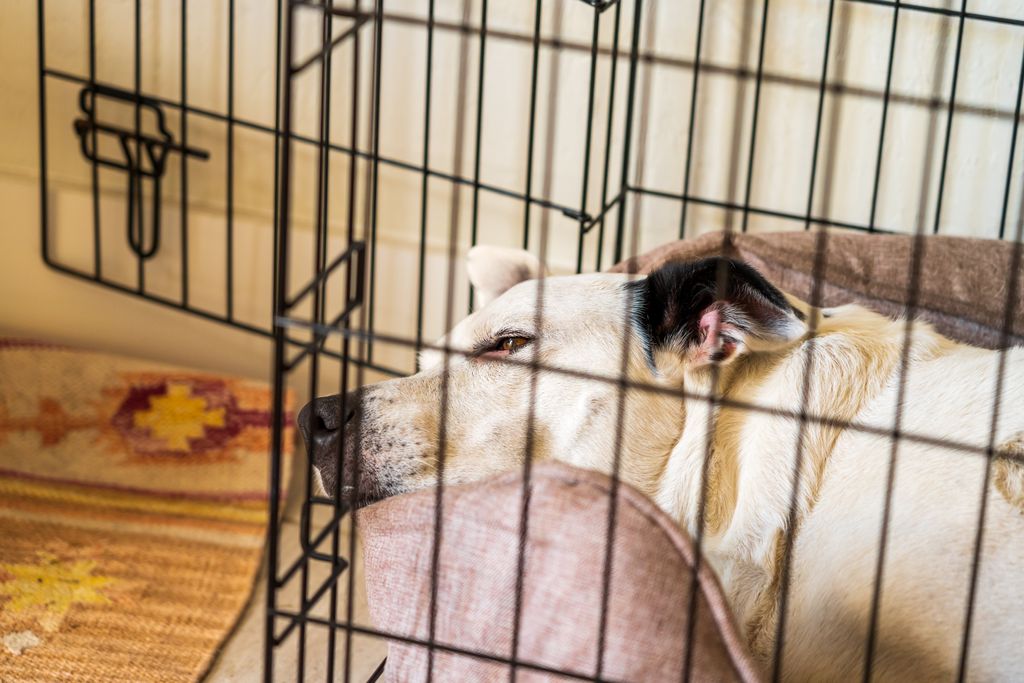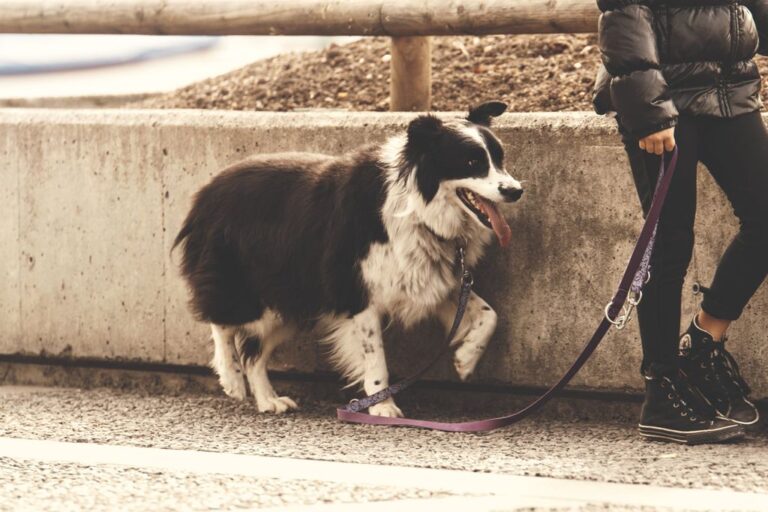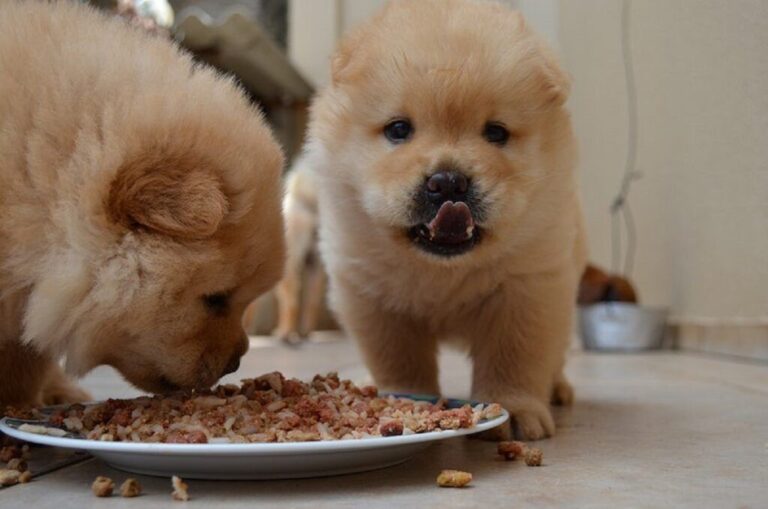Train your dog to be comfortable in a crate?
Crate training is an essential skill for dog owners to teach their furry friends. It provides a safe and comfortable space for dogs, prevents destructive behavior, and facilitates travel and vet visits. However, crate training can be a challenging process. In this article, we will explore the importance of crate training, how to choose the right crate, introduce your dog to the crate, establish a crate routine, and troubleshoot common crate training challenges.
Key Takeaways
- Crate training provides a safe and comfortable space for dogs.
- It helps prevent destructive behavior in dogs.
- Crate training facilitates travel and vet visits.
- Choosing the right crate size is crucial for your dog’s comfort.
- Gradual introduction and positive reinforcement are key to crate training success.
Why Crate Training is Important

Creating a Safe Space for Your Dog
When it comes to crate training, the hardest part is often getting your dog to feel comfortable and secure in their crate. It can be a challenging process, but with patience and consistency, you can help your furry friend see their crate as a safe space. One important tip is to never force your dog into the crate. Instead, make it a positive and inviting place by using treats and toys to encourage crate time. Gradually introduce your dog to the crate, allowing them to explore it at their own pace. This will help them associate the crate with positive experiences and reduce any anxiety or fear they may have.
Preventing Destructive Behavior
When it comes to preventing destructive behavior, we’ve found that crate training can be a game-changer for our furry friends. Freedom No Pull Harness is a great tool to help redirect their energy and keep them focused on positive behaviors. By providing a safe and comfortable space, we can give our dogs a sense of security and reduce the likelihood of them engaging in destructive activities.
Facilitating Travel and Vet Visits
When it comes to traveling or visiting the vet, crate training can be a game-changer for us. It provides a safe and familiar space for our furry friends, making the whole experience less stressful. Whether we’re going on a road trip or taking a trip to the vet, having our dog comfortable in their crate ensures a smoother journey for everyone involved.
Choosing the Right Crate

Size Matters: Finding the Perfect Fit
When it comes to finding the perfect fit for your dog’s crate, there are a few important factors to consider. First and foremost, you want to ensure that your dog has enough space to stand up, turn around, and lie down comfortably. This is crucial for their overall comfort and well-being. Additionally, you’ll want to take into account the size of your dog when they are fully grown. Proper sizing is essential to prevent any discomfort or restriction of movement as your dog grows. It’s also important to consider the type of crate you choose. A sturdy and secure design will provide your dog with a safe and cozy space to relax in. By taking these factors into consideration, you can ensure that your dog’s crate is the perfect fit for their needs.
Opting for a Sturdy and Secure Design
When it comes to choosing a crate for your furry friend, sturdy and secure are the keywords to keep in mind. You want a crate that can withstand your dog’s energy and enthusiasm, while also providing a safe and comfortable space for them. Look for crates made of durable materials like metal or heavy-duty plastic, with secure latches and locks to prevent any escape attempts. It’s important to ensure that the crate is well-constructed and doesn’t have any sharp edges or loose parts that could potentially harm your dog. By opting for a sturdy and secure design, you can have peace of mind knowing that your dog is safe and protected in their crate.
Considering Your Dog’s Needs
When choosing a crate for your dog, it’s important to consider their specific needs. Every dog is unique, and what works for one may not work for another. Here are a few factors to keep in mind:
- Size: Make sure the crate is spacious enough for your dog to stand up, turn around, and lie down comfortably. A crate that is too small can be uncomfortable and restrict their movement.
- Comfort: Look for a crate with a soft and cozy bed or blanket to make it more inviting for your dog. Some dogs may also prefer a crate with a cover for added privacy and security.
- Accessibility: Consider the ease of getting in and out of the crate. If your dog has mobility issues or is older, a crate with a large door or low entrance may be more suitable.
Remember, the crate should be a safe and comfortable space for your dog, so take their needs into account when making your choice.
Introducing Your Dog to the Crate

Making the Crate a Positive and Fun Place
When it comes to making the crate a positive and fun place for our furry friends, there are a few things we can do. First, it’s important to create a cozy and inviting environment inside the crate. Adding a soft blanket or a comfortable bed can make all the difference. We want our dogs to feel safe and secure in their crate, so it’s essential to choose the right size crate for them. A crate that is too small can be cramped and uncomfortable, while a crate that is too big may not provide the sense of security that dogs need.
Gradual Introduction and Desensitization
When it comes to introducing your dog to the crate, bed is an important keyword to keep in mind. Dogs are naturally drawn to comfortable and familiar spaces, so it’s a good idea to place their bed inside the crate. This will help create a positive association with the crate and make it more inviting for your dog. Additionally, having their bed in the crate will provide them with a sense of security and comfort during the gradual introduction process.
Using Treats and Toys to Encourage Crate Time
When it comes to getting your dog comfortable in their crate, treats and toys can be your best friends. These are powerful tools that can help create positive associations with the crate and make it a place your dog wants to be.
One effective strategy is to use treats to reward your dog for going into the crate. Start by placing a treat just inside the crate and encourage your dog to go in and get it. Gradually, you can move the treat further back into the crate, rewarding your dog for going deeper inside. This helps them associate the crate with something positive and rewarding.
Toys can also play a role in encouraging crate time. Leave a few of your dog’s favorite toys in the crate, making it a fun and engaging place for them. You can even rotate the toys to keep things interesting. This helps create a sense of comfort and familiarity with the crate.
Remember, the key is to make crate time a positive experience for your dog. By using treats and toys, you can help them see the crate as a cozy and enjoyable space.
Establishing a Crate Routine

Creating a Schedule for Crate Time
When it comes to crate training, consistency is key. Establishing a regular schedule for crate time helps your dog understand what is expected of them and creates a sense of routine. This routine can provide a sense of security and comfort for your dog, making them more willing to spend time in the crate.
To create a schedule, start by determining the appropriate amount of time your dog should spend in the crate. This will depend on factors such as their age, breed, and individual needs. Gradually increase the duration of crate time over time, allowing your dog to become accustomed to longer periods.
It’s important to stick to the schedule as closely as possible. Try to feed your dog at the same times each day and incorporate crate time into their daily routine. Consistency in the timing of crate time helps your dog anticipate and adjust to the schedule, making the process smoother and more effective.
Remember, crate time should not be used as a form of punishment. It should be a positive experience for your dog, so be sure to provide plenty of praise and rewards when they willingly enter the crate and remain calm inside.
Using Verbal Cues and Commands
When it comes to crate training, verbal cues and commands play a crucial role in helping your dog understand what is expected of them. By using consistent and clear language, you can effectively communicate with your furry friend and make the crate training process smoother.
One important cue to teach your dog is the command to enter the crate. You can use a simple phrase like ‘Go to your crate’ or ‘Crate time’ to signal to your dog that it’s time to go inside. Pair this command with a treat or a favorite toy to create a positive association with the crate.
Consistency is key when using verbal cues and commands. Make sure to use the same words and tone of voice every time you give a command. This will help your dog recognize and understand the cue more easily.
Here are a few tips for using verbal cues and commands effectively:
- Keep your commands short and simple. Dogs respond better to single-word or two-word phrases.
- Use a firm but gentle tone of voice. Avoid yelling or sounding angry, as this can confuse or scare your dog.
- Practice the commands in different situations and environments to reinforce your dog’s understanding.
Remember, patience and positive reinforcement are key when training your dog. With consistent use of verbal cues and commands, your dog will soon become comfortable and confident in their crate.
Rewarding Good Behavior
When it comes to crate training, rewarding good behavior is key. It’s important to reinforce positive actions and make the crate a place your dog wants to be. One way to do this is by using treats and toys as incentives. Whenever your dog willingly enters the crate or stays calm inside, give them a tasty treat or a favorite toy. This positive reinforcement will help them associate the crate with positive experiences and encourage them to continue using it.
Troubleshooting Common Crate Training Challenges

Dealing with Separation Anxiety
When it comes to separation anxiety, it’s important to understand that every dog is unique. What works for one dog may not work for another. However, there are some general strategies that can help your furry friend feel more comfortable when left alone.
First, it’s essential to create a positive association with the crate. Start by placing treats and toys inside the crate, making it a place of fun and excitement. Gradually increase the time your dog spends in the crate, always rewarding good behavior.
Another helpful tip is to establish a routine. Dogs thrive on consistency, so having a set schedule for crate time can provide a sense of security. Use verbal cues and commands to signal crate time, and be sure to reward your dog for going in willingly.
If your dog still struggles with separation anxiety, consider using calming aids such as pheromone diffusers or calming music. These can help create a soothing environment and make your dog feel more at ease in the crate.
Remember, patience and understanding are key when dealing with separation anxiety. With time and consistent training, your dog can learn to feel more comfortable in the crate.
Addressing Whining and Barking
When it comes to addressing whining and barking, it’s important to remember that every dog is unique and may have different reasons for exhibiting these behaviors. Understanding the underlying cause is key to finding the most effective solution. Here are a few strategies that have worked for us:
- Positive Reinforcement: Rewarding quiet behavior with treats or praise can help reinforce the idea that being calm and quiet in the crate is a desirable behavior.
- Distraction Techniques: Providing your dog with engaging toys or puzzles can help redirect their attention away from whining or barking.
- Creating a Calm Environment: Using cozy blankets or a soft bed in the crate can help create a sense of comfort and security for your dog.
Remember, patience and consistency are key when addressing whining and barking. It may take time for your dog to adjust to the crate, but with the right approach, they can learn to be calm and content in their crate.
Handling Accidents in the Crate
When accidents happen in the crate, it can be frustrating for both us and our furry friends. However, it’s important to remember that accidents are a normal part of the learning process. Accidents can occur due to various reasons such as anxiety, inadequate potty training, or medical issues. Here are a few tips to help you handle accidents in the crate:
- Clean up thoroughly: Accidents can leave behind lingering smells that may encourage your dog to repeat the behavior. Use an enzyme-based cleaner to eliminate any odors.
- Reassess potty training methods: If accidents are happening frequently, it may be necessary to revisit your potty training techniques. Consistency and positive reinforcement are key.
- Consult a veterinarian: If accidents persist or if you suspect a medical issue, it’s important to consult with a veterinarian to rule out any underlying health problems.
Conclusion
In conclusion, crate training can be a beneficial and effective way to help your dog feel comfortable and secure. By providing a safe space, preventing destructive behavior, and facilitating travel and vet visits, crate training offers numerous advantages. Remember to choose the right crate size, introduce your dog gradually, establish a crate routine, and address any challenges that may arise. With patience, consistency, and positive reinforcement, you can train your dog to love their crate and enjoy the benefits it brings to both of you.
Frequently Asked Questions
How long does it take to crate train a dog?
The time it takes to crate train a dog can vary depending on the individual dog and their previous experiences. Some dogs may take a few days to adjust to the crate, while others may take a few weeks. Consistency, patience, and positive reinforcement are key in crate training.
Can I crate train an older dog?
Yes, you can crate train an older dog. The process may take a bit longer compared to crate training a puppy, but with patience and consistency, older dogs can learn to be comfortable in a crate.
Should I leave food and water in the crate?
It is generally recommended not to leave food and water in the crate for extended periods of time. However, you can provide your dog with a small amount of water in a spill-proof bowl if they will be in the crate for a longer duration. It’s important to monitor your dog’s water intake and take them outside for bathroom breaks as needed.
What if my dog doesn’t like being in the crate?
If your dog doesn’t like being in the crate, it’s important to go at their pace and make the crate a positive and comfortable space. Start by gradually introducing them to the crate using treats and toys, and associate positive experiences with the crate. Avoid forcing your dog into the crate or using it as a form of punishment.
Can I crate train my dog if they have separation anxiety?
Yes, crate training can be beneficial for dogs with separation anxiety. However, it’s important to consult with a professional trainer or behaviorist who can provide guidance specific to your dog’s needs. Crate training should be done in conjunction with a comprehensive treatment plan for separation anxiety.
What should I do if my dog has an accident in the crate?
If your dog has an accident in the crate, it’s important to clean it up thoroughly to remove any odor. Avoid scolding or punishing your dog, as this can create a negative association with the crate. Instead, focus on reinforcing positive bathroom habits and providing regular opportunities for your dog to go outside.







One Comment